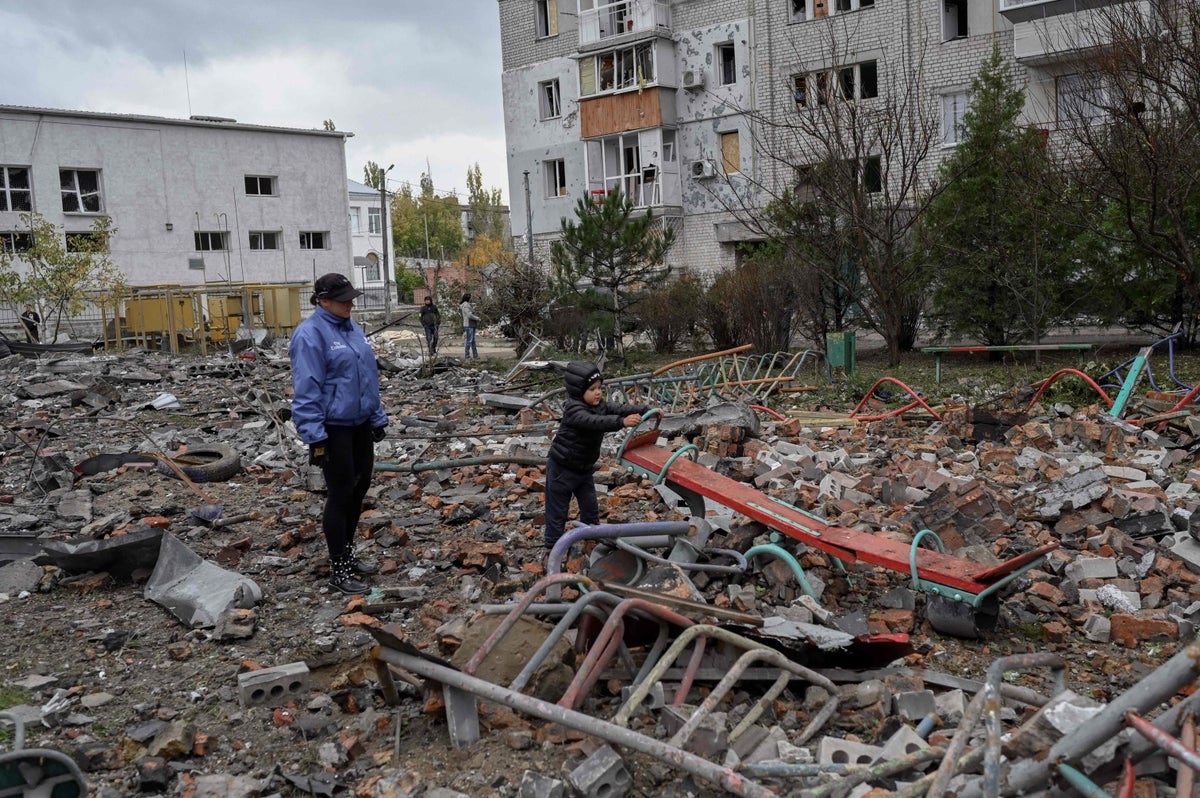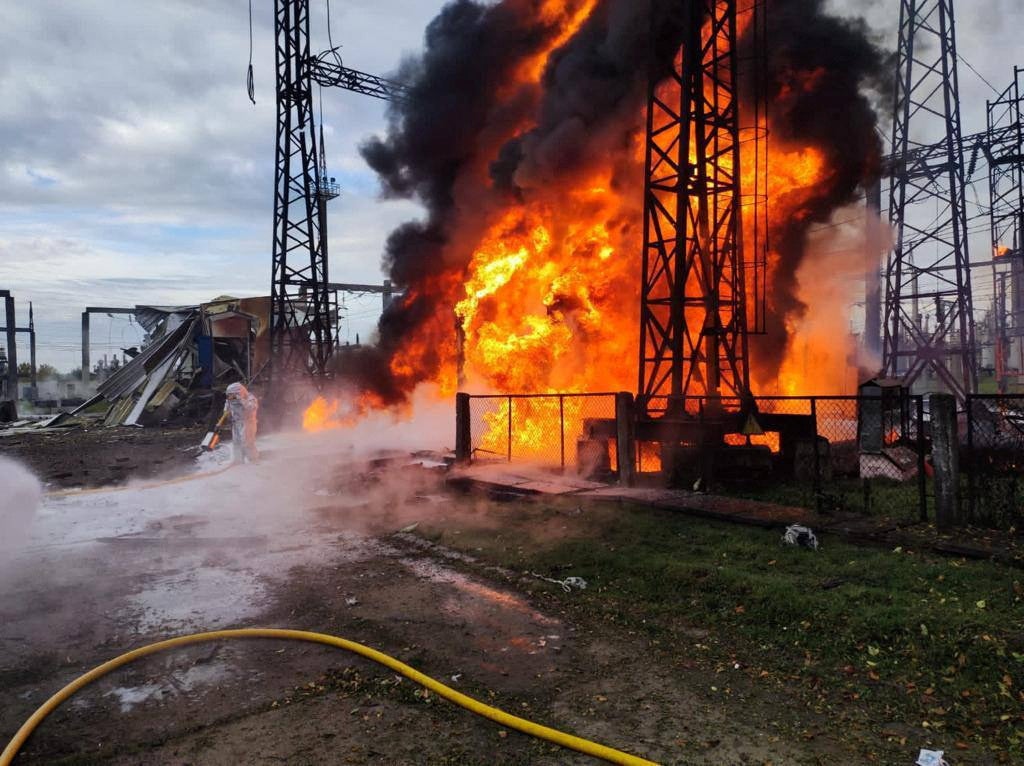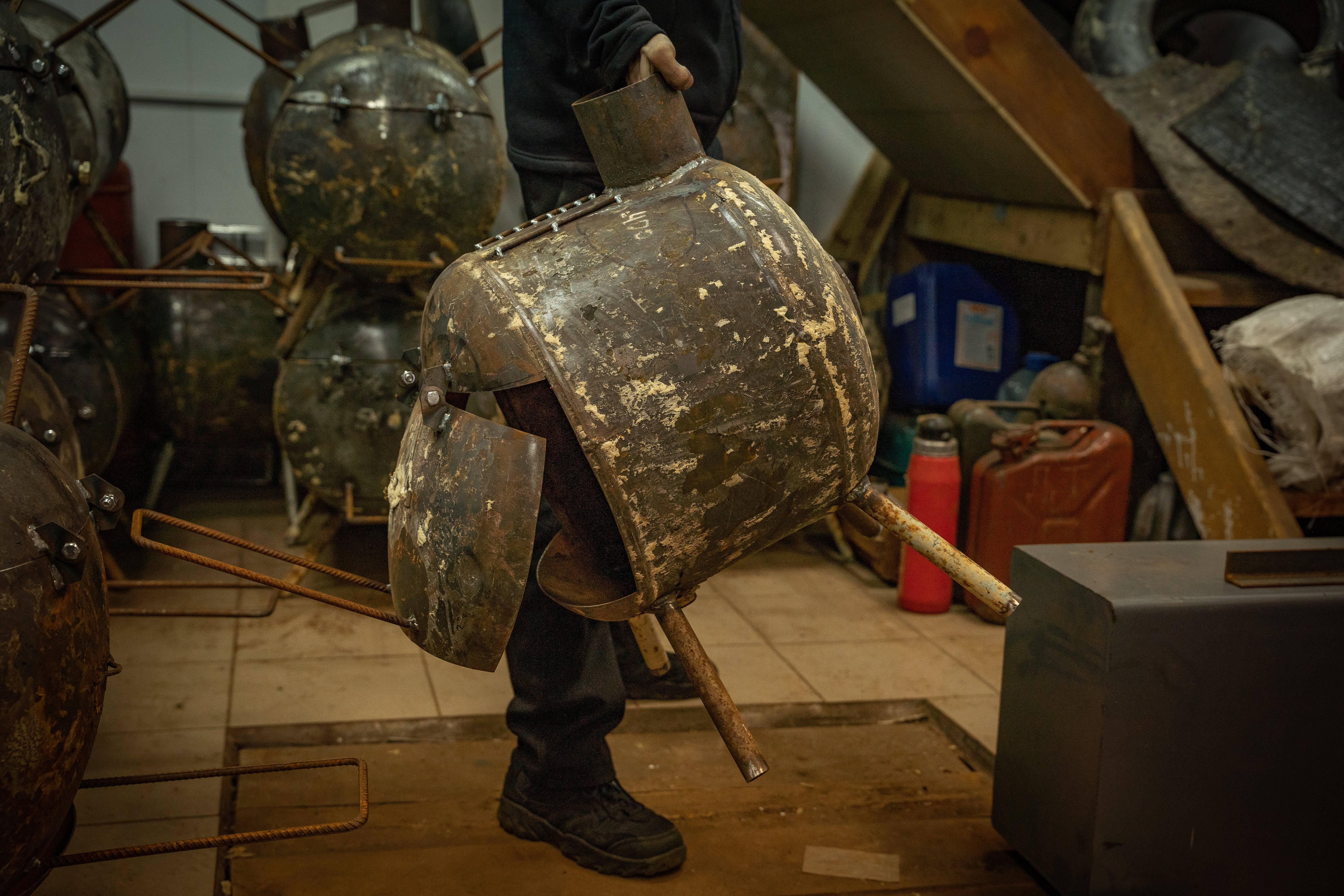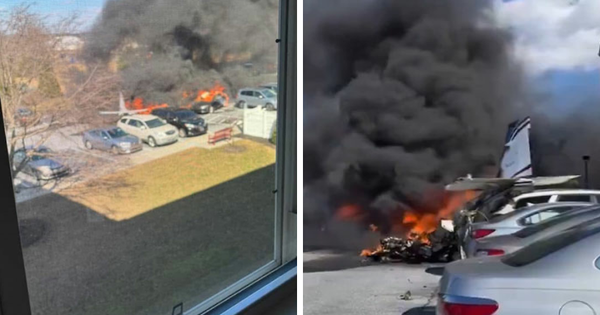
Discarded water heaters, empty propane canisters and scraps of steel reinforcement bars are the key ingredients needed to fight Ukraine’s imminent plunge into bitterly cold darkness.
That is according to Evgeny, 35, a former territorial defence member who is now back in his motorcycle garage in Kyiv, recovering from injuries sustained in the war.
In a tiny backstreet workshop, the wounded engineer and his team of three mechanics are busy welding makeshift pot belly stoves in a haze of sparks.
The squat grubby creations could be lifesavers: President Volodymyr Zelensky warned this weekend that there will be rolling power cuts across the country after officials estimated 40 per cent of Ukraine’s energy infrastructure has been damaged or destroyed by Russian drone and missile strikes which started two weeks ago.
Officials from DTek, the largest investor in Ukraine’s energy sector which controls multiple plants across the country, told The Independent the attacks could cause “the biggest humanitarian disaster since 1945”, warning civilians will inevitably die as a result.
And as temperatures begin to dip well below zero, the only way to keep warm, to have light and even to cook may be these homemade devices.
“If you go to hypermarkets like Epicentre, all the wood-burning stoves are expensive and sold out,” Evgeny, says explaining that they are perfecting cheaply made lightweight portable heaters for soldiers near the front lines.
“These stoves are very easy to make: all you need is an old water heater or empty propane cylinders which are heavier but generate more long-lasting heat. These stoves cost about $35 to make, that’s it.”
Ukrainians across the country are bracing for a bitter winter without heating, water or electricity, as officials say that since early October, Russia has launched “massive” attacks on energy infrastructure across the country, destroying or damaging 40 per cent of the facilities including half of the country’s thermal power capacity.
Russia and the forces it backs have also seized some key facilities, including the Zaporizhzhia power plant as well as several thermal power plants, sparking panic and wreaking havoc on the grid.
Over the weekend, Russia’s defence ministry confirmed its forces were continuing to launch attacks against Ukraine’s energy and military infrastructure. On Monday, the head of Ukraine’s intelligence service, Kyrylo Budanov, said their forces had shot down around 70 per cent of approximately 330 Shahed drones that Russia has fired so far.
But more are coming. Budanov claimed that Russia’s military had ordered about 1,700 units of various types of drones, and a second batch of about 300 Shahed-136 UAVs (unmanned air vehicles) – manufactured by Iran – is currently being rolled out. (Tehran has vehemently denied supplying Russia with the weapons.)

The escalating drone onslaught has meant that as many as 4,000 towns and villages and cities across Ukraine have lost power over the last few weeks.
And so Evgeny and his team have been perfecting their prototypes of makeshift stoves – creating both lightweight portable models for soldiers on the move and heavy stationary heat-efficient models for homes.
They have trained local communities in how to make them for those in the recently liberated areas and even posted a video on their social media pages explaining how people can make them at home, a clip which has garnered tens of thousands of views in just a few weeks.
“Communities can ask a local welder to help or crowdsource a stick welder which is not a lot of money to make them,” he continued. He said his team had sourced three warehouses of discarded water heaters – the “perfect material” for the portable models they are sculpting for the military.
These makeshift solutions could be lifelines. While the electricity supply has technically been restored to the country, over the weekend President Zelensky made a personal appeal to the population to limit their use of appliances and pay attention to newly implemented scheduled power cuts which were designed to stabilise the embattled system.
Defence ministry officials meanwhile said Russia was deliberately attacking energy facilities as the “next level of genocide” and would continue the bombardments.
“Since Russia was not able to defeat us on the battlefield they are doing what they can to make us die slowly,” Yuriy Sak, an adviser to the defence ministry told The Independent.

Antonina Antosha, from Dtek, warned that “the situation is turning critical”. She said that of the six thermal power plants (TPPS) under Dtek’s control, five have been attacked since 10 October, strikes which killed one of their employees and injured 10 others. Two of their other thermal plants in Luhansk and Zaporizhzhia are now under the control of Russian-backed forces.
She said until the attacks started Ukraine had even been exporting electricity to the European Union to help countries replace Russian energy resources. That has now stopped.
“Now Ukraine’s energy facilities are being destroyed, resulting in millions of Ukrainians being left without lights and heat. This could be the biggest humanitarian disaster since 1945,” she added.
Back at the garage in Kyiv Evgeny said that is why civilians were turning to makeshift means to keep safe and warm. In supermarkets across the country, candles, heaters and torches were out of stock or running low.
Families told The Independent how they were stockpiling wood, charcoal and fuel, prepping for the worst.
“We have three warehouses of supplies now and plan to expand,” Evgeny said of their project.
“Our main problem is that we are funding this with our money and donations. If someone can invest we can increase capacity. Ukraine will need it.”







